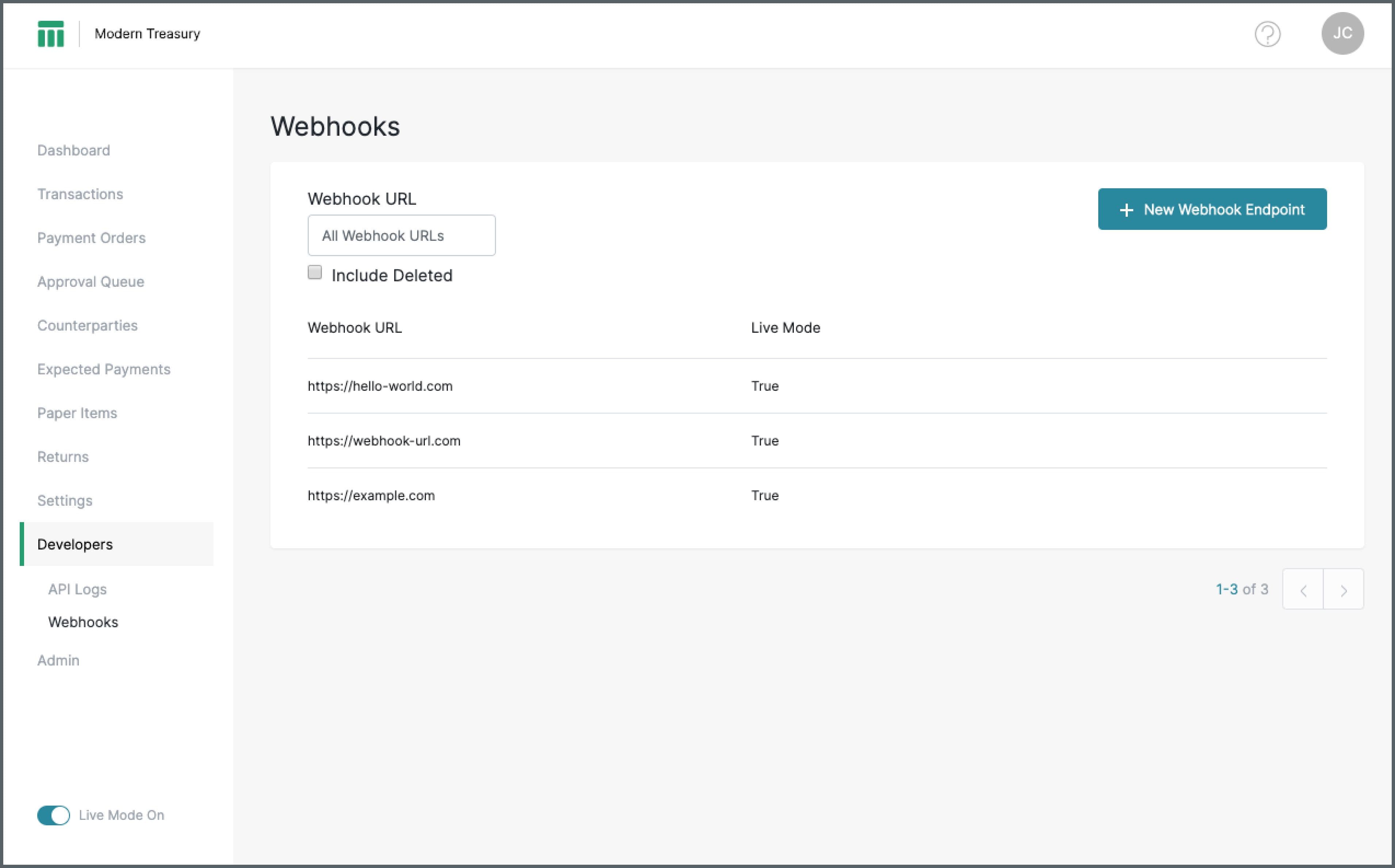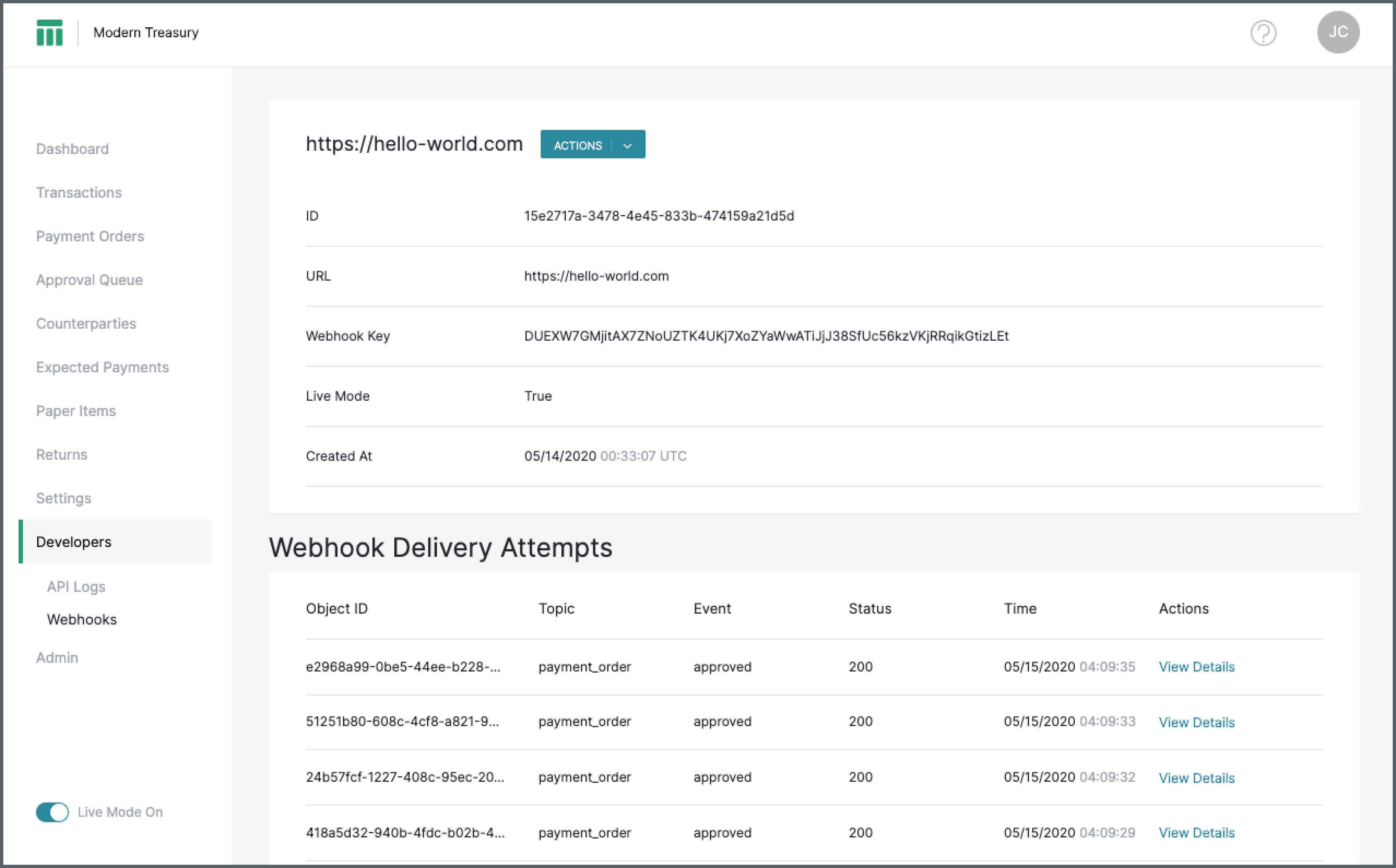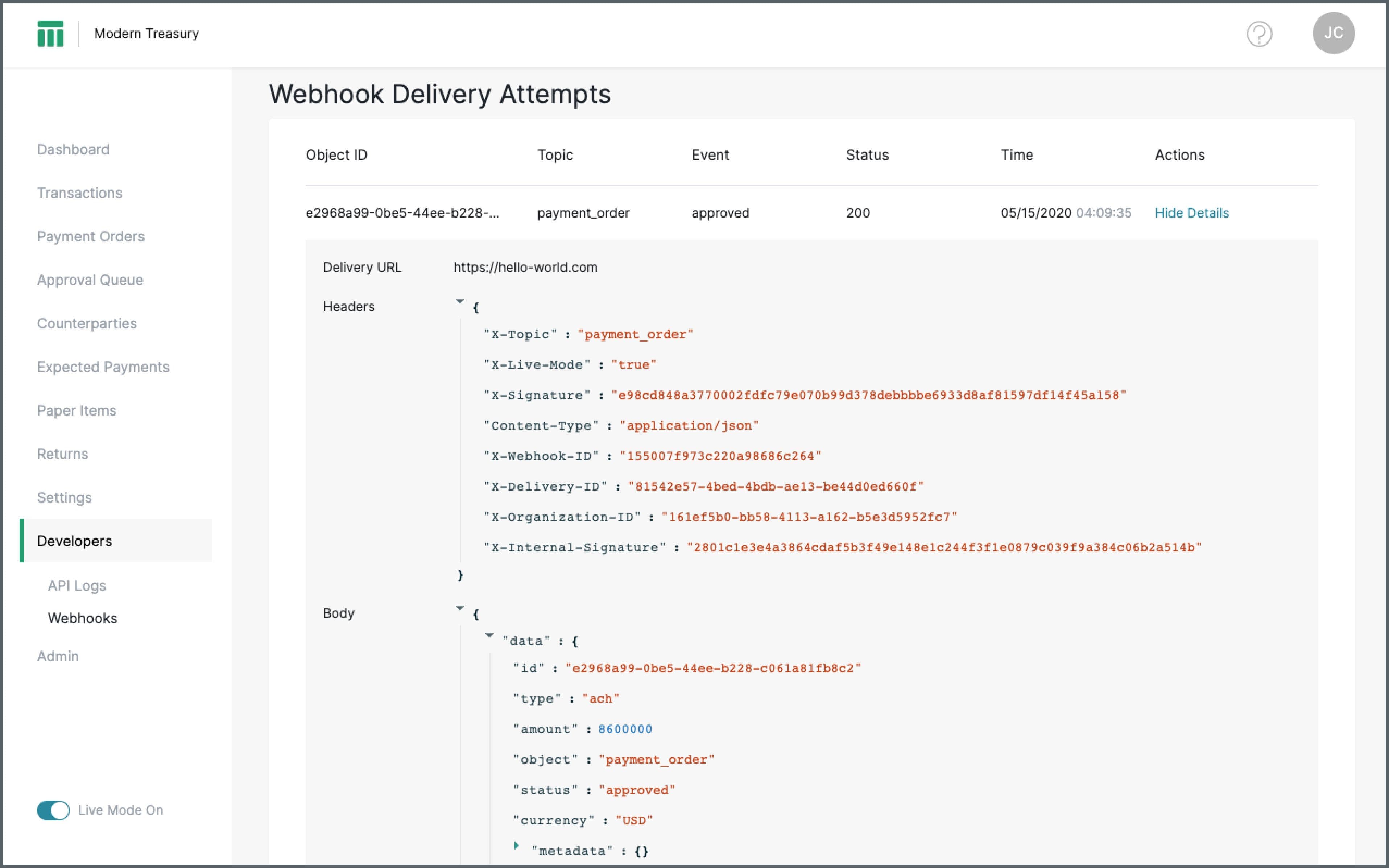Modern Treasury and Paxos Make It Easier for Businesses to Move Money with Stablecoins.Learn more →
Webhook Logs
Due to the asynchronous nature of payment operations, Modern Treasury has a robust webhooks API that sends out webhooks when objects such as payment orders change state. Many of our customers build against our webhooks API, and rely on webhooks to trigger state changes and start automated processes on their end.

Due to the asynchronous nature of payment operations, Modern Treasury has a robust webhooks API that sends out webhooks when objects such as payment orders change state. Many of our customers build against our webhooks API, and rely on webhooks to trigger state changes and start automated processes on their end.
Despite webhooks being an integral part of our service offering, there was no easy way to investigate whether specific webhooks were sent and delivered successfully. As larger and larger companies and developer teams integrate with Modern Treasury, lack of easy webhooks debugging has become a challenge for our customers. Similar to the motivation behind API Logs, we want to improve the developer experience in relation to building against, and monitoring of, webhooks.
Previously, the different webhook endpoints were managed in the “Developers” section page. Now, under the “Developers” section on the left side of the app, you will find a new “Webhooks” subsection. This will list all the webhook endpoints for your organization. New webhooks can also be created here.

To look into information related to a specific endpoint, simply click on the URL. This brings you to an overview of the endpoint, showing the webhook key, whether it’s a live or testing endpoint, and when it was created. This page also allows you to edit the URL or delete the endpoint altogether.

Below the overview information lists all the webhook deliveries associated with this endpoint, starting May 15. Each attempt will show five attributes:
- the object ID it is associated with
- the topic (e.g. “payment_order”)
- the event (e.g. “canceled”
- when it was sent
- what was the status of the delivery

Clicking on “View Details” will show the headers and body of the webhook sent, along with what URL it was sent to (as the endpoint URL could have been changed to something else). Clicking on the delivery attempt itself will bring you to the object it is associated with, whether a payment order, expected payment, or something else.
In the future, we will make the webhooks interface even more robust with features such as the ability to customize webhook endpoints for different topics and events.
If you want to build your payments infrastructure on Modern Treasury, please send us a note at hello@moderntreasury.com.




